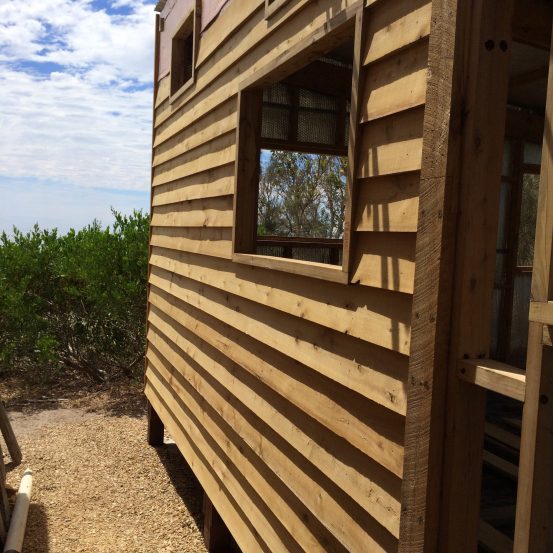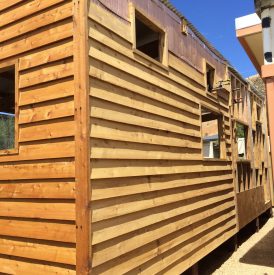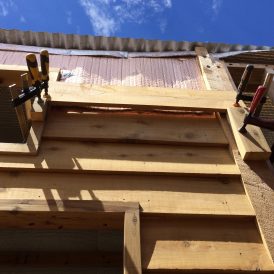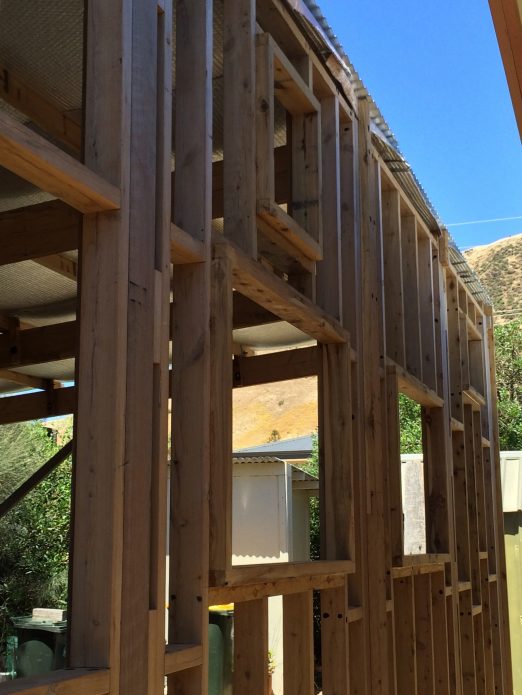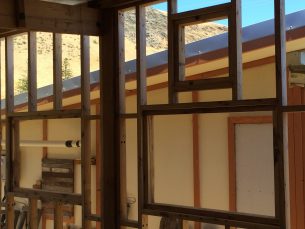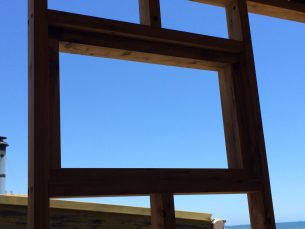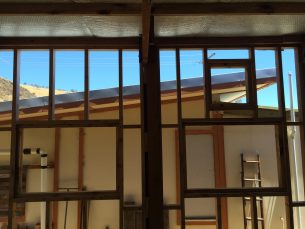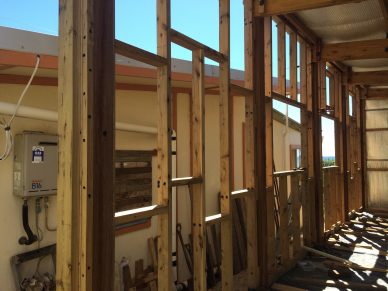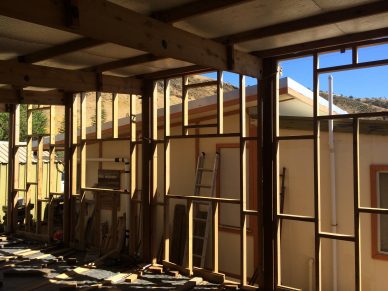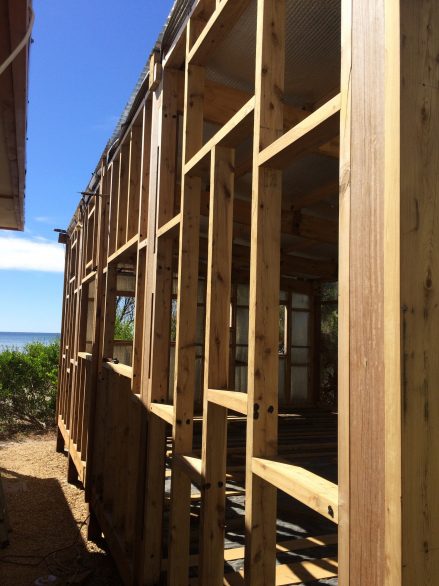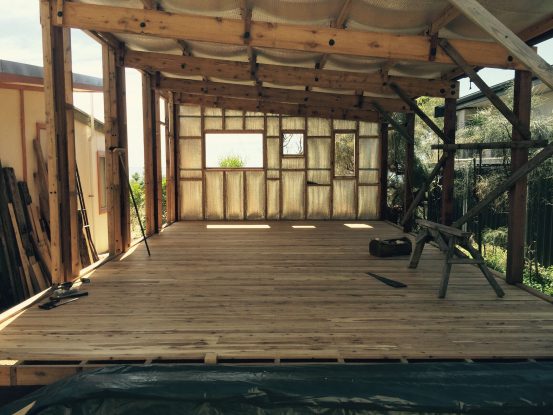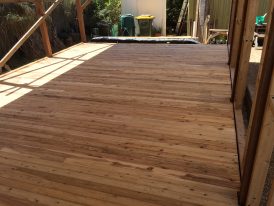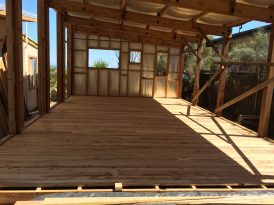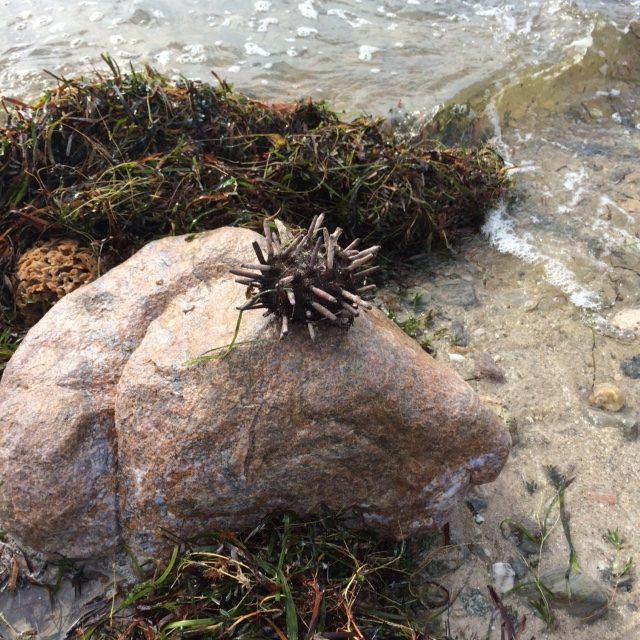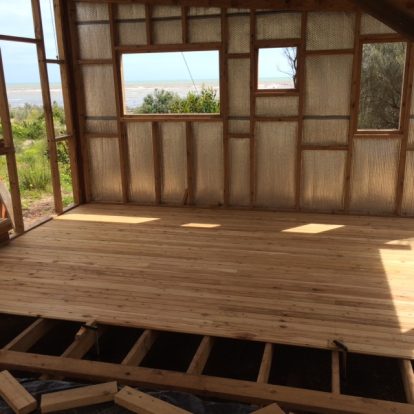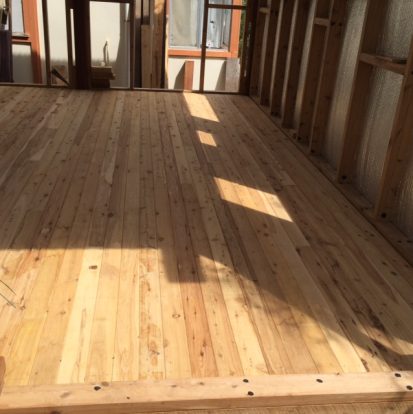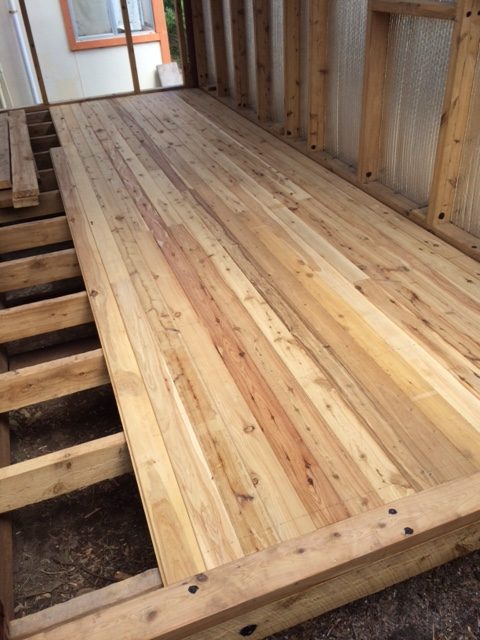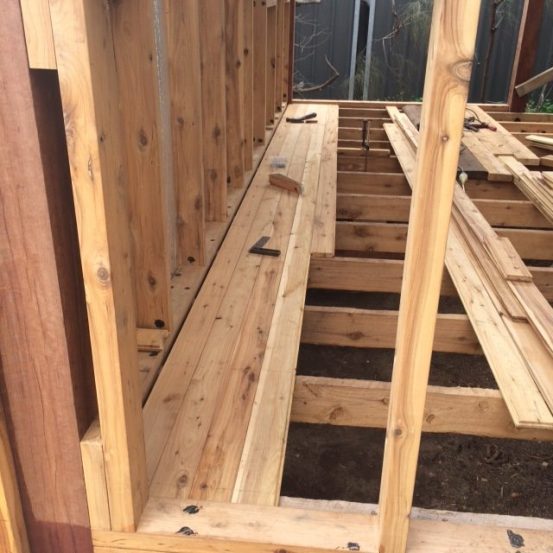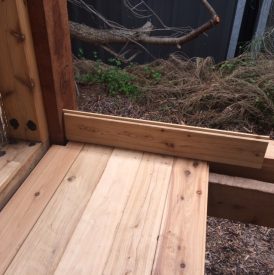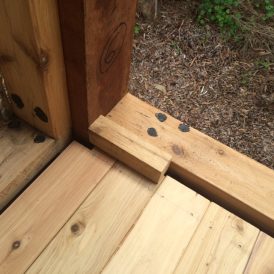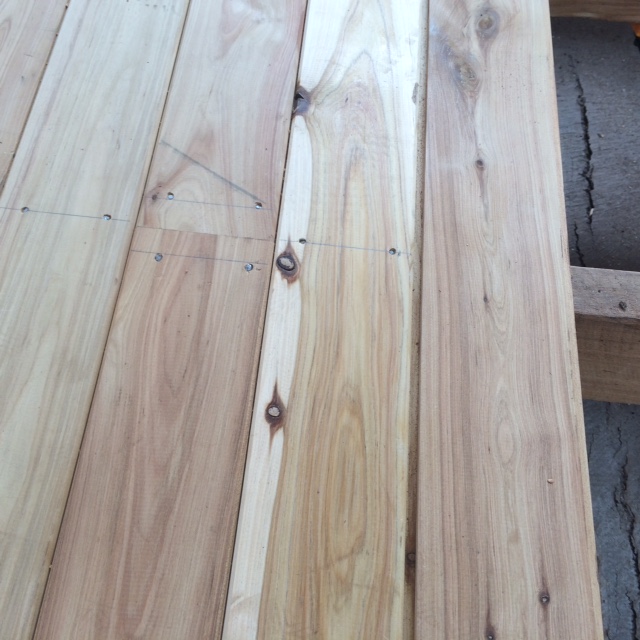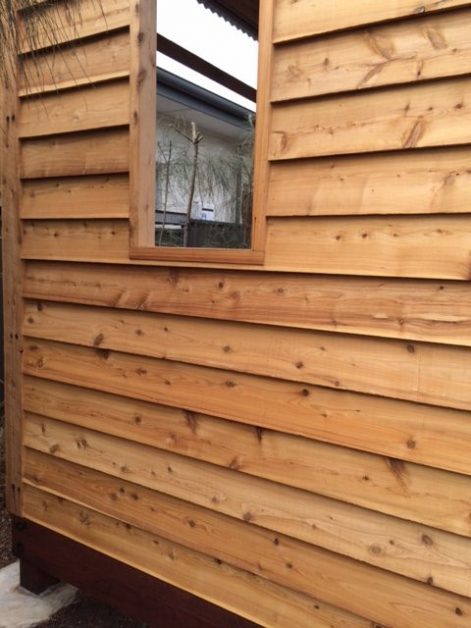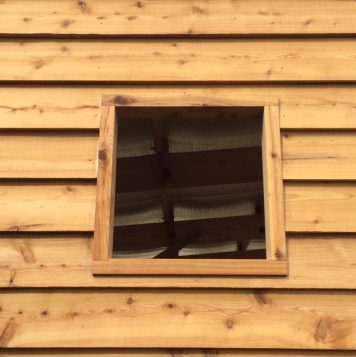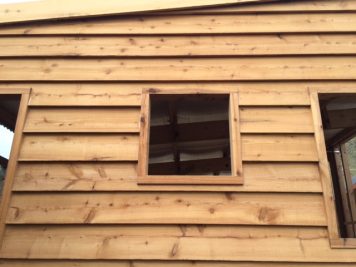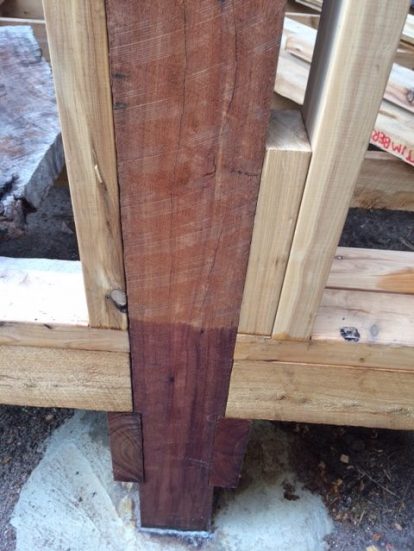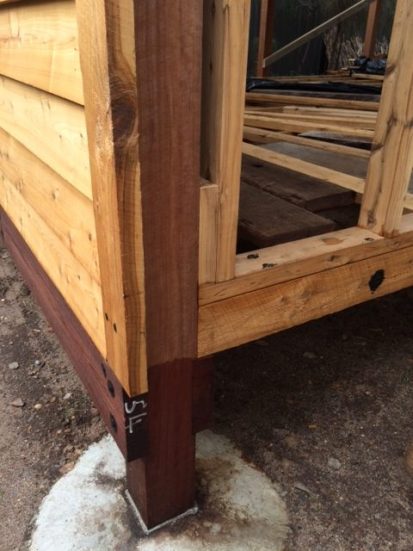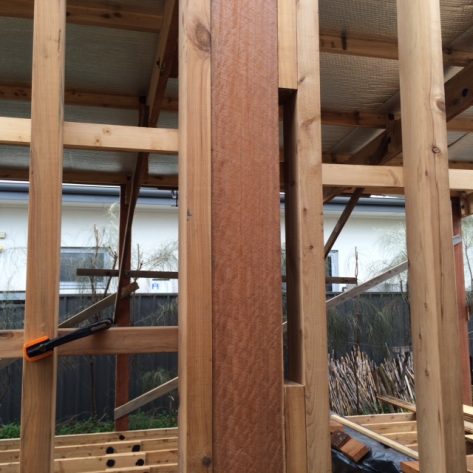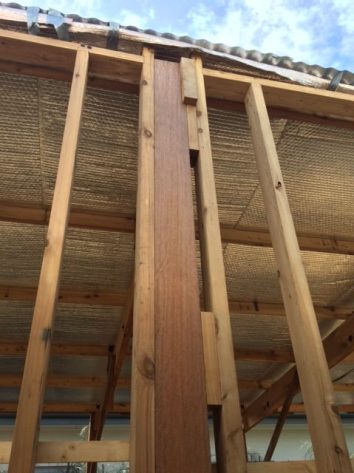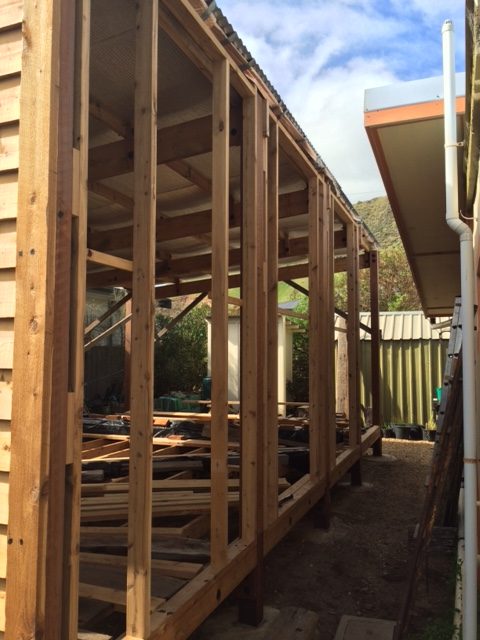Category: Uncategorized
SOUTHERN LIGHT
….is the steady light at Lady Bay.
Two workbenches will be lit from the southern side.
The making of window frames – even simple ones like these – is finicky work. I can well understand why professional builders prefer to get in their window frames ready-made.
Too late now.
My home-made versions are, at the least, solid. But I do not think I am a born window-maker.
MADE TO LAST
A number of visiting experts have declared that our southern Wall frames are over-engineered.
Well, they may be right, although I do not have a copy of the relevant building regulations on hand, to verify the claim. One thing is certain: if a badly-built wall is exposed to the fierce gales of January and July – and every other month bar one or two – it will sooner or later collapse.
To my mind, the frames are exactly what they should be: just right for the conditions – never mind building regulations and conventions. I would rather have an over-engineered boatshed, intact, than a ‘regulated’ structure on the verge of ruin.
The end-timbers are in place; my next task is to fit inner frames to the windows. These will support the glass, and provide an edge for the cypress cladding.
If all goes well, I should be installing the weatherboard in a week or so. No doubt there will be a few more (mild) dramas, as I re-invent the wheel yet again. I am a slow learner, and a slow worker, and so the work proceeds in the usual way: bit by bit.
LEARNING CURVE
HIGH SEAS
AND MORE….
Floorboards could easily become an obsession. Fortunately there will be an End, along with the Beginning and Middle. When the End arrives, I will get back to our southern wall, which currently lacks uprights, windows, cypress cladding….and in short, provides small protection from the fierce southerly gales sweeping along the coast.
MORE FLOORBOARDS
FLOORBOARDS
Sam has recorded the beginning of our cypress floor, which extends eastwards from the western wall.
As the old saying goes: well begun – a lot more to do….
You can see the half inch gap between the outside floorboard and the wall: large wooden floors may (or may not) expand and contract according to the season, although native cypress is said to be relatively stable.
The ‘gap’ will eventually be covered by a low skirting board.
I have chosen to nail into the face of the boards, rather than through the top edge of the tongue (the latter method is called ‘blind nailing’). After all, this is a boatshed, not a dining room; strength and durability take precedence over appearance….and I expect the same principle will apply to our boats.
FIRST COAT
Here are the western weatherboards, after a first application of decking oil. I will tackle the second coat in a week or so, if there is a dry spell. The oil looks to be primarily Tung Oil, with small additions of Eucalypt, Pine etc. It gives a lovely, fresh finish, which should change to soft grey over the next few years – especially on the western side of the Boatshed, where the wood will be exposed to the full impact of winter storms and summer heat.
